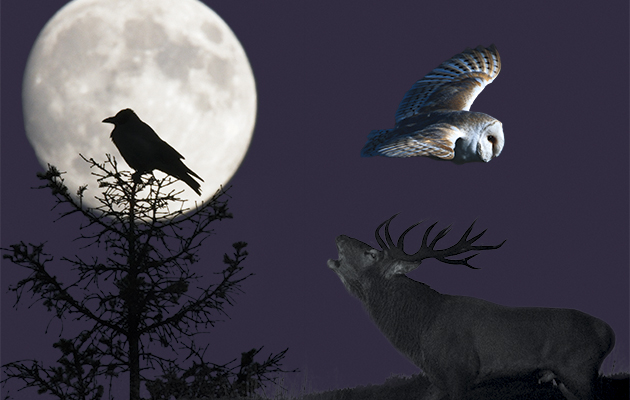Things that go screech in the night
With the hubbub of the day evaporated, sounds seem to ring out more clearly. Find out what’s going screech in the night outside your window.


During my years as a gamekeeper, I’ve spent a lot of time lurking about at night when most people are fast asleep, spending both warm summer nights and freezing winter vigils watching for poachers or waiting for foxes.
At dead of night, with the hubbub of the day evaporated, your sight is so limited that sounds seem to ring out more clearly. The sheer number and the clarity of nocturnal noises in the countryside is astonishing. The twit twoo call of the tawny owl is a familiar one and people who live in towns are probably more used to the blood-curdling screams, barks and general chattering of foxes than many country folk unless you live in Midsomer Murders territory, where there always seems to be a fox yapping in the background.
The expression ‘night owl’ is apt, as these nocturnal birds of prey make the most extraordinary noises when going about their business in the wee small hours. We’ve had a family of barn owls nesting in a shed near our house in the Scottish Borders for the past few years and, once you’ve witnessed their night-time antics, it’s easy to understand why they’re also known as screech owls.
Eerily especially if you haven’t heard it before the pre-fledged chicks emit a range of strange wheezing calls that I can only compare to an idling steam train hissing and chuffing as it builds up steam. They make such a loud, unearthly range of sounds that our old labrador is often quite terrified when he goes out for a late-night pee and hears these little barn owls puffing at full volume.
The nightingale, most famous nocturnal songster of all, might be long gone from London’s Berkeley Square, but is never forgotten by anyone lucky enough to hear the ad lib assortment of tunes this summer visitor croons to attract a mate. When I worked at Holkham in Norfolk, I was fortunate to be able to sit outside William and Ann Sayer’s lodge house in the park, listening to the birds in full song as they announced the staking out of their territories.
There are, however, two birds that I have yet to hear in the wild: the whirring of the nightjar or the crake-ing, like the scraping of a comb, of the once common corncrake, which can still be heard on some of the Western Isles of Scotland.
In Highland glens and on Exmoor, autumn brings the creepy belching of rutting red-deer stags, punctuated by the ferocious clashing of antlers, a hard, bleak sound that echoes in valleys. It penetrates and bounces off ancient trees in the New Forest, too, as fallow bucks set about each other.
Exquisite houses, the beauty of Nature, and how to get the most from your life, straight to your inbox.
In spring, common frogs and toads are also pretty vocal as they gather to mate and hedgehogs snort and snuffle as they shuffle through the undergrowth. Near the river that rushes through our valley, even above the soothing sound of water breaking over rocks, I have heard salmon and sea trout propelling themselves upstream through the shallows, en route to their spawning grounds.
At Holkham, I enjoyed sitting out on the ground that ran down to the sea as winter approached, listening to flocks of whistling wigeon and honking pink-footed geese criss-crossing the busy moonlit sky like a scene from Star Wars.
However, the summer nights were incredible, at times sounding more like the jungle than the north Norfolk coast. There was the steady background drone of natterjack toads emitting rasping croaks, overlaid with the incessant singing of reed and sedge warblers. Ducks and waders, particularly lap-wings, would give the odd gentle call.
I’d know when a fox had trotted up in search of an easy feed because all hell would break loose, with every bird taking flight and shouting its warning cry at the interloper, creating a deafening cacophony of disgust and fear that drowned out every other sound until the danger had passed.
On many occasions, I would drift off to sleep, only to be awoken with a start by these cries for help, whether it be terns on the beach, curlew on the marsh or grouse on the hill the presence of Reynard will always set them off.
The most frightening sounds are when two mammals meet face to face and only one is likely to survive. Once, I heard one hell of a commotion blood-curdling screams, snorts and wails and, when I got close enough to see down the beam of my spotlight, I discovered it was a fox and a badger having a right old set-to.
However, the sound that caused me the most angst was back in my early days as a beatkeeper on the Welbeck estate in Nottinghamshire, when poaching was rife and night watching a necessity. I was sitting on the root of a great lime tree, leaning back against its mighty trunk, when I heard a cough. I froze and clutched my trusty nightstick a little tighter. The cough came nearer, whereupon I leapt up, stick in hand, shouting ‘Welbeck keepers’, only to find not a hardened poacher, but a rather bewildered-looking sheep staring back at me.
